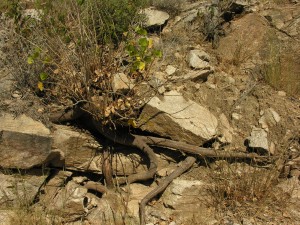When I was first learning the flowers of the Catalina Mountains, I took a particular interest in the coral bean (Erythrina flabelliformis), with its beautiful red tubular flowers. I knew it grew in Molino Basin, about 4500 feet in elevation, and that the flowers usually came out before the leaves. This made the flowers easier for the pollinators to spot, but somehow I found it difficult to find them. That first year of looking, by the time I found the plants they had pretty well finished blooming, and I determined to learn where they were so that I could find them more quickly the following year. 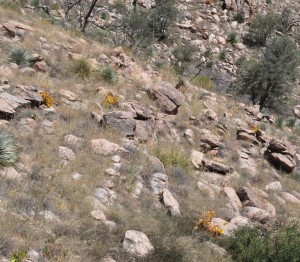
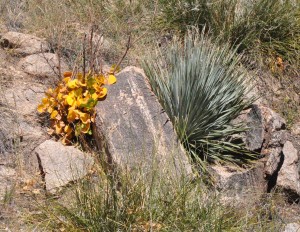
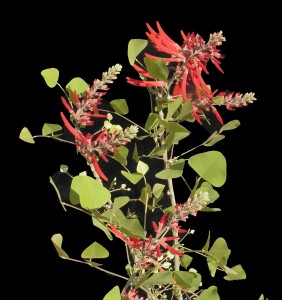
That fall I drove up into Molino Basin and dotted all over the hillsides were the bright yellow leaves of the coral bean. They were very easy to spot, as you can see in this photograph. I made a mental note of a number of them, and when I returned the following June found them easily.
Here is a close up of one, with a desert spoon shrub the other side of the rock.
This picture shows the plant with flowers as well as leaves. This is unusual, since the flowers usually come before the first leaf.
I learned that this plant is not really a shrub. South of us, in Mexico, it grows into a substantial tree. But here the winters are too cold, so they never grow much above 6 feet in height. One day while exploring the stream bed in Molino Basin, I came across this coral bean plant with the roots exposed by erosion. The roots were as thick as my arm. Clearly this root system could support a fairly large tree.
In 2006 my wife and I spent three months living in Australia, mostly suburban Sydney, and one day walking in the neighborhood I came across a thirty-foot erythrina tree in full and glorious bloom. It is the same genus but not the same species as the one in Arizona.
In addition to the gorgeous red flowers, the plant produces beautifully colored seeds, varying from brown to deep red, and separated by little white cus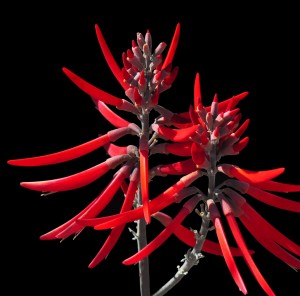
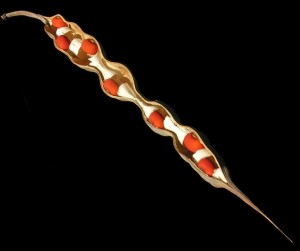 hions, as you can see in the final photograph..
hions, as you can see in the final photograph..

